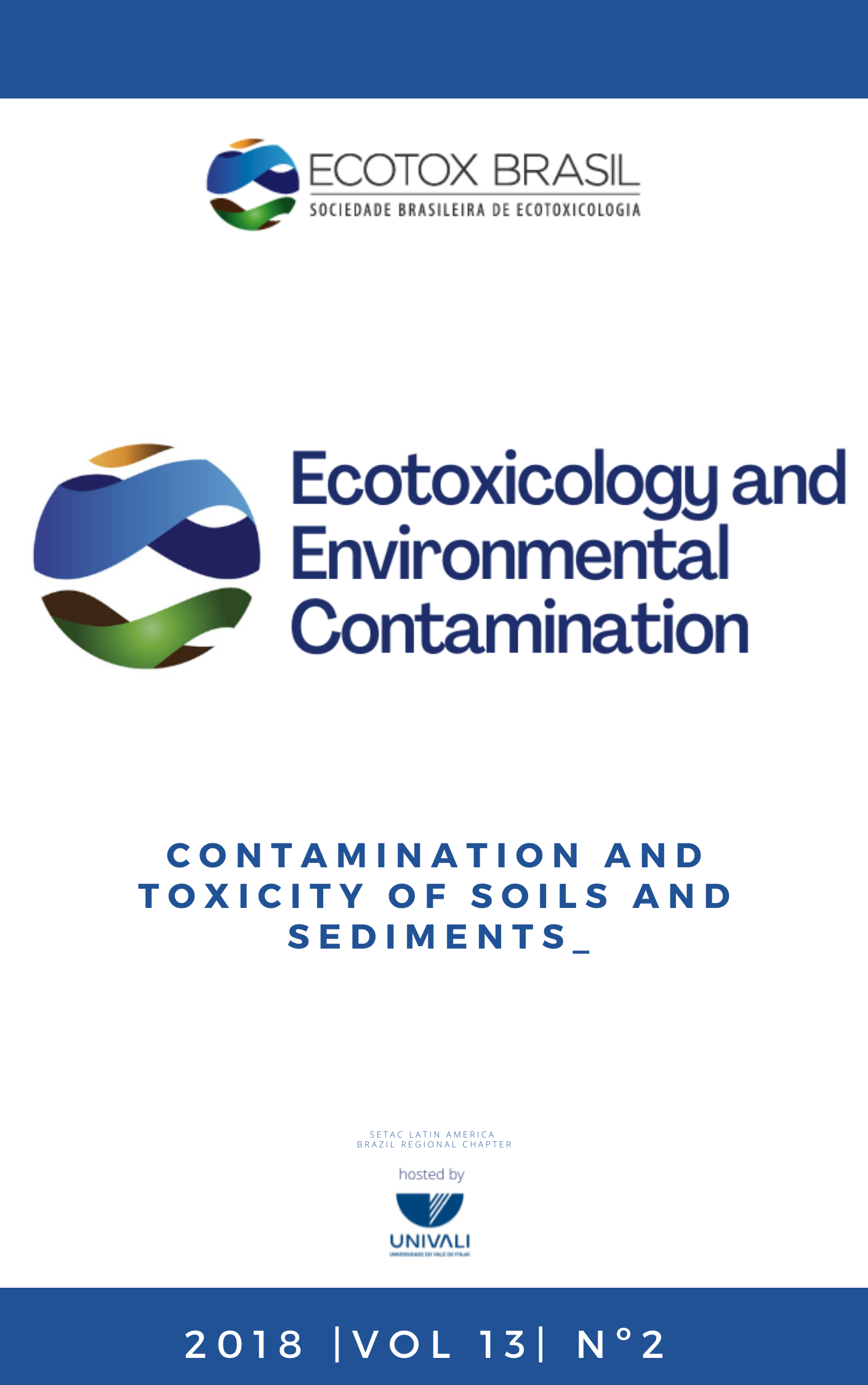Developing a protocol whole sediment toxicity testing with the polychaete Armandia agilis
DOI:
https://doi.org/10.5132/eec.2018.02.11Abstract
Sediments constitute a key compartment of coastal and marine ecosystems. They also constitute the ultimate sink for most of the chemical substances and a source of contamination to the benthic fauna. In this study, we aimed to develop a protocol for acute toxicity tests using the polychaete Armandia agilis as a model species. To achieve that, we evaluated the species tolerance to the salinity of overlying water (in the presence and absence of sediment), the tolerance to sediments with different particle sizes, the sensitivity to reference substances (potassium dichromate – K2Cr2O7, zinc sulfate – ZnSO4; and Sodium Dodecyl Sulfate - SDS), and the responses to clean and contaminated sediments. The species survives in several latitudes on the American coast (North Carolina, Gulf of Mexico, and South-Southeast of Brazil) in different haline conditions (above 20) in typically sandy textures. In Ilhabela (SE Brazil), the species was available throughout the year. The LC50-48h values calculated to the K2Cr2O7, ZnSO4, and SDS, were 20.94 (33.38-14.04); 4.25 (7.66-2.98); 4.90 (6.59-3.84) mg L-1 respectively; thus A. agilis can be considered as sensitive as other benthic organisms. The responses of A. agilis to environmental sediments were similar to those exhibited by the amphipod Tiburonella viscana, showing that this polychaete is responsive to contaminated sediments. Armandia agilis can be considered a promising organism to be used in sediment toxicity tests.Downloads
Published
How to Cite
Issue
Section
License
Copyright © 2006 ECOTOX-Brasil
Copyright notice: It is a condition for publication that manuscripts submitted to this journal have not yet been published and will not be simultaneously submitted or published elsewhere. By submitting a manuscript, the authors agree that copyright for their article is transferred to the Sociedade Brasileira de Ecotoxicologia (ECOTOX-Brasil) if and when the article is accepted for publication. The copyright covers the exclusive rights to reproduce and distribute articles, including reprints, photographic reproductions or any other reproduction of a similar nature, including translations. No part of this publication may be reproduced, stored in a retrieval system or transmitted in any form or by any means, electronic, mechanical, photocopying, recording or otherwise, without permission of the publisher.
Notice: While every effort is made by the EEC, editors and editorial board to see that no inaccurate or misleading data, opinions or statements appear in this journal, they wish to make it clear that the contents of the articles and advertisements published herein are the sole responsibility of the contributors or advertisers concerned. Accordingly, the EEC, the editorial board and editors and their respective employees, officers and agents accept no responsibility or liability whatsoever for the consequences of any inaccurate or misleading data, opinion or statement.




